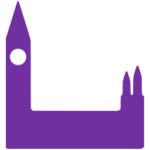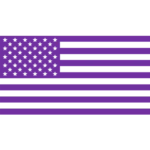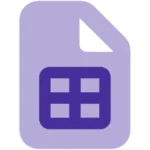The yellow highlighter streaking across textbook pages, the stack of handwritten flashcards, the late-night cramming sessions before exams. These iconic images of student life are rapidly becoming as outdated as the rotary phone.
We’re witnessing nothing less than the complete transformation of how humans learn and retain information.
While many educators and students cling to traditional revision techniques out of habit or nostalgia, the evidence increasingly suggests these methods are fundamentally flawed, and are vanishing quickly before our eyes. Their demise isn’t just inevitable, it’s necessary.
Why Traditional Revision Methods Are Failing Us
Traditional learning approaches built around physical schools, print media, and in-person teaching have structured education for generations. These systems require students to physically attend classes to access knowledge, creating inherent limitations in who can learn and how efficiently they can do so.
The fundamental problem with traditional passive study methods is their rigid, linear structure.
When you re-read textbooks or lecture notes, you’re forced to review content in a fixed order rather than focusing on complex concepts. This creates either too low or too high cognitive load for optimal learning.
Consider the standard revision techniques most of us grew up with:
Re-reading notes and textbooks: Despite being perhaps the most common study method, research consistently shows this approach yields minimal retention improvements.
Highlighting and underlining: These create an illusion of learning without significantly improving recall. They make us feel productive while actually delivering poor results.
Cramming before exams: This technique might help you pass a test, but it creates virtually no long-term knowledge retention.
Passive review of material: Simply reviewing information without active engagement leads to minimal learning gains.
The inefficiency of these methods isn’t just theoretical. A comparative study at Clarksburg Elementary School found that students using traditional methods only improved their math test scores by 8.3% (from 72% to 78%). In comparison, those using digital learning tools saw a dramatic 24.2% improvement (from 70% to 87%).
These numbers tell a clear story. Traditional revision methods aren’t just becoming outdated. They’re actively holding learners back.
The Pandemic Accelerated an Inevitable Shift
COVID-19 didn’t create the decline of traditional revision methods. It merely accelerated a transformation that was already underway.
When global lockdowns forced educational institutions worldwide to adopt digital platforms virtually overnight, it created a massive natural experiment. Students and educators who had resisted digital learning tools suddenly had no choice but to embrace them.
The results were revealing.
The pandemic acted as a catalyst that permanently changed how students learn and teachers teach, paving the way for digital education to take centre stage in ways that might have otherwise taken decades.
Many discovered that digital tools weren’t just adequate replacements for traditional methods. In many cases, they were superior.
The Science Behind Better Learning Methods
The superiority of modern revision techniques isn’t just about convenience or novelty. It’s grounded in cognitive science.
Take spaced repetition, for instance. This technique systematically increases time intervals between reviews of previously learned material to exploit the psychological spacing effect.
In a review of over 800 academic papers, researchers found that over 96% of experiments yield statistically significant improvements in learning outcomes when students space their study sessions versus massing them together (cramming).
The evidence is overwhelming.
Traditional methods like re-reading and highlighting create what psychologists call “fluency illusions” – the false sense that we’ve mastered material simply because it looks familiar.
Digital tools address these cognitive blind spots through:
Active recall: Digital flashcard systems force retrieval practice, strengthening neural pathways far more effectively than passive review.
Adaptive algorithms: Modern learning software tracks performance and adjusts to focus on areas where you struggle.
Interleaved practice: Digital systems can mix different topics and problem types, preventing the false confidence that comes from repeatedly practising the same concept.
Immediate feedback: Digital tools provide instant correction, preventing the reinforcement of misconceptions.
These aren’t minor improvements. They represent fundamental advances in how effectively humans can learn.
The Digital Tools Replacing Traditional Methods
The educational landscape has undergone a profound transformation. Pen and paper are giving way to sophisticated software, e-books are replacing heavy textbooks, and stacks of notebooks are being supplanted by tablets and digital devices.
The most powerful new revision tools include:
Spaced repetition systems – Apps like Anki, Quizlet, and Memrise use algorithms to schedule reviews at optimal intervals for long-term retention.
AI-powered adaptive learning platforms – Systems like Khan Academy, ALEKS, and DreamBox adjust content difficulty based on learner performance.
Digital note-taking with knowledge graphs – Tools like Roam Research, Obsidian, and Notion help learners connect ideas rather than just collecting them.
Virtual and augmented reality – Immersive learning environments allow students to interact with complex concepts in three-dimensional space.
Gamified learning systems – Platforms that incorporate game mechanics to increase engagement and motivation.
These tools aren’t just digitised versions of old methods. They represent entirely new approaches to learning that weren’t possible before.
Modern AI-powered adaptive learning stands at the forefront of this revolution, using sophisticated algorithms to create personalized learning experiences that evolve with the learner. These systems ensure educational journeys align with individual capabilities rather than forcing students into a one-size-fits-all model.
The market reflects this shift. The global e-learning market is projected to grow from $0.2 billion in 2021 to $1.85 billion by 2030, representing a robust 25.2% compound annual growth rate.
The Human Element Remains Essential
Despite the clear advantages of digital learning tools, we shouldn’t view this transformation as technology simply replacing human elements of education.
The most effective modern learning approaches combine digital efficiency with human guidance.
While traditional teaching methods with hands-on activities promote the development of soft skills through face-to-face interactions, digital education provides accessibility, interactivity, and individualised adaptive learning that traditional methods cannot match.
The optimal approach is to integrate digital technologies into conventional classrooms rather than completely replacing them.
Teachers and mentors remain crucial, but their roles are evolving. Rather than being primary sources of information, they’re becoming guides who help students navigate the vast landscape of digital learning resources.
This shift allows educators to focus more on developing critical thinking, creativity, and other higher-order skills that even the most sophisticated AI systems cannot yet effectively foster.
Overcoming Resistance to Change
Despite compelling evidence supporting digital learning methods, resistance to abandoning traditional approaches remains strong in many educational settings.
This resistance stems from several factors:
Institutional inertia: Educational systems are notoriously slow to change, with established curricula, assessment methods, and teaching practices deeply entrenched.
Comfort with the familiar: Both students and educators often prefer methods they’re accustomed to, even when those methods are demonstrably less effective.
Digital divide concerns: Legitimate worries about unequal access to technology can slow the adoption of digital learning tools.
Misconceptions about digital learning: Many still view digital education as inherently less rigorous or practical than traditional approaches.
Overcoming these barriers requires not just better technology, but better communication about the benefits of modern learning methods.
It also requires thoughtful implementation that addresses equity concerns and provides proper training for educators and learners.
The Future of Learning
As we look ahead, several trends are likely to accelerate the shift away from traditional revision methods:
AI tutors becoming mainstream: Artificial intelligence will increasingly provide personalised guidance at a fraction of the cost of human tutoring.
Neuroadaptive learning: Systems that monitor brain activity and physiological signals to optimise learning conditions in real-time.
Microlearning dominance: Short, focused learning sessions distributed throughout the day will replace extended study periods.
Collaborative digital learning: Platforms that enable students to learn together remotely in ways that surpass traditional group study.
Credentials revolution: Traditional degrees will face increasing competition from skill-specific micro-credentials that better reflect actual learning outcomes.
These developments won’t just change how we study. They’ll fundamentally transform what it means to learn.
Embracing the Learning Revolution
The death of traditional revision methods isn’t something to mourn. It’s an opportunity to embrace dramatically more effective approaches to learning.
For students, this means experimenting with digital tools that align with how our brains actually work, rather than clinging to familiar but inefficient study habits.
For educators, it means rethinking assessment methods, curriculum design, and pedagogical approaches to leverage the power of digital learning platforms.
For educational institutions, it means investing in digital infrastructure and training while reimagining what education looks like in a world where information access is no longer their primary value proposition.
The transformation is already well underway. Those who adapt quickly will thrive in the new learning landscape. Those who cling to outdated methods risk being left behind.
The yellow highlighter and stack of flashcards served us well for generations. But their time has passed. The future of learning is digital, adaptive, and infinitely more effective than what came before.
And that’s something worth celebrating.

































